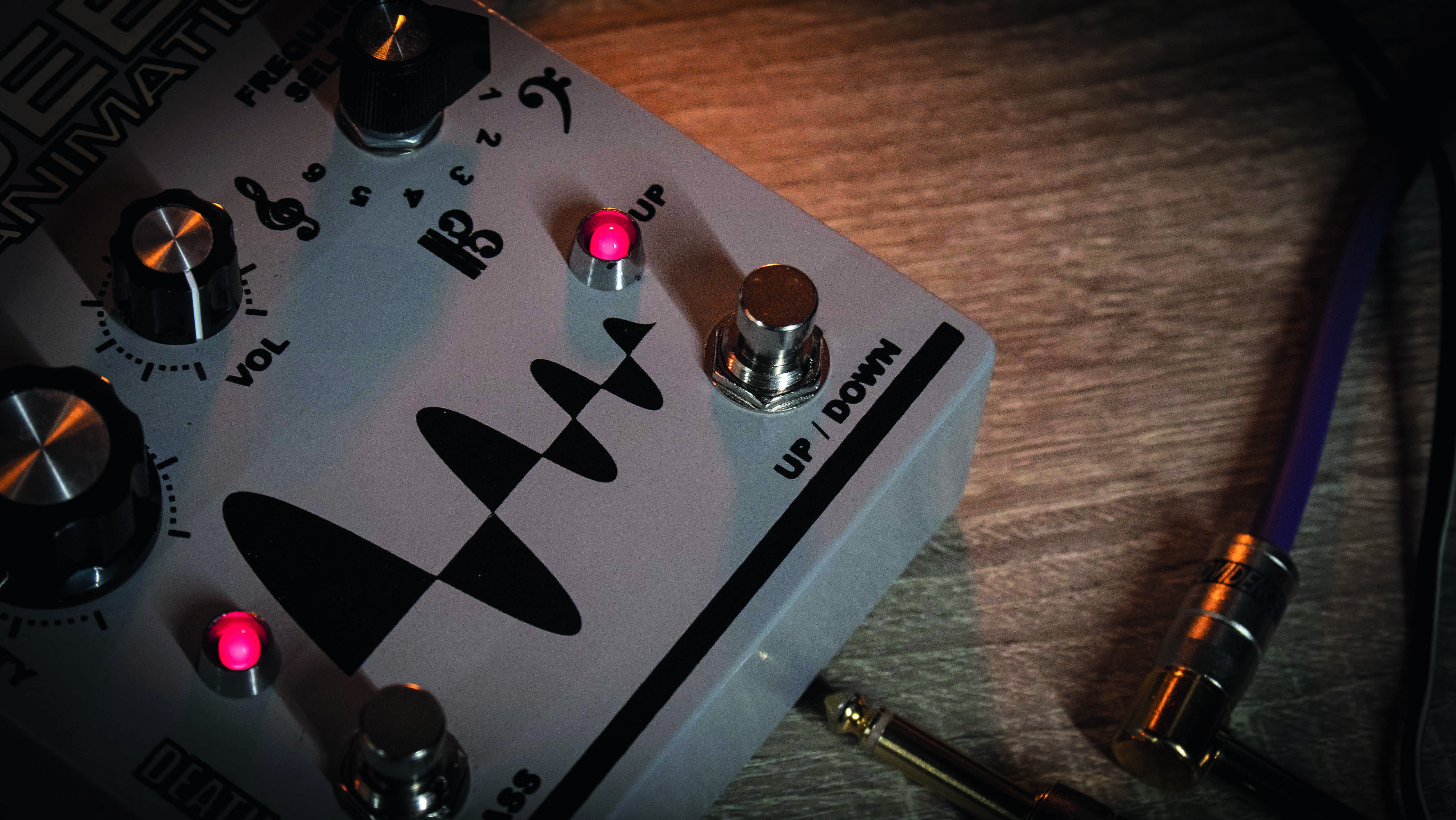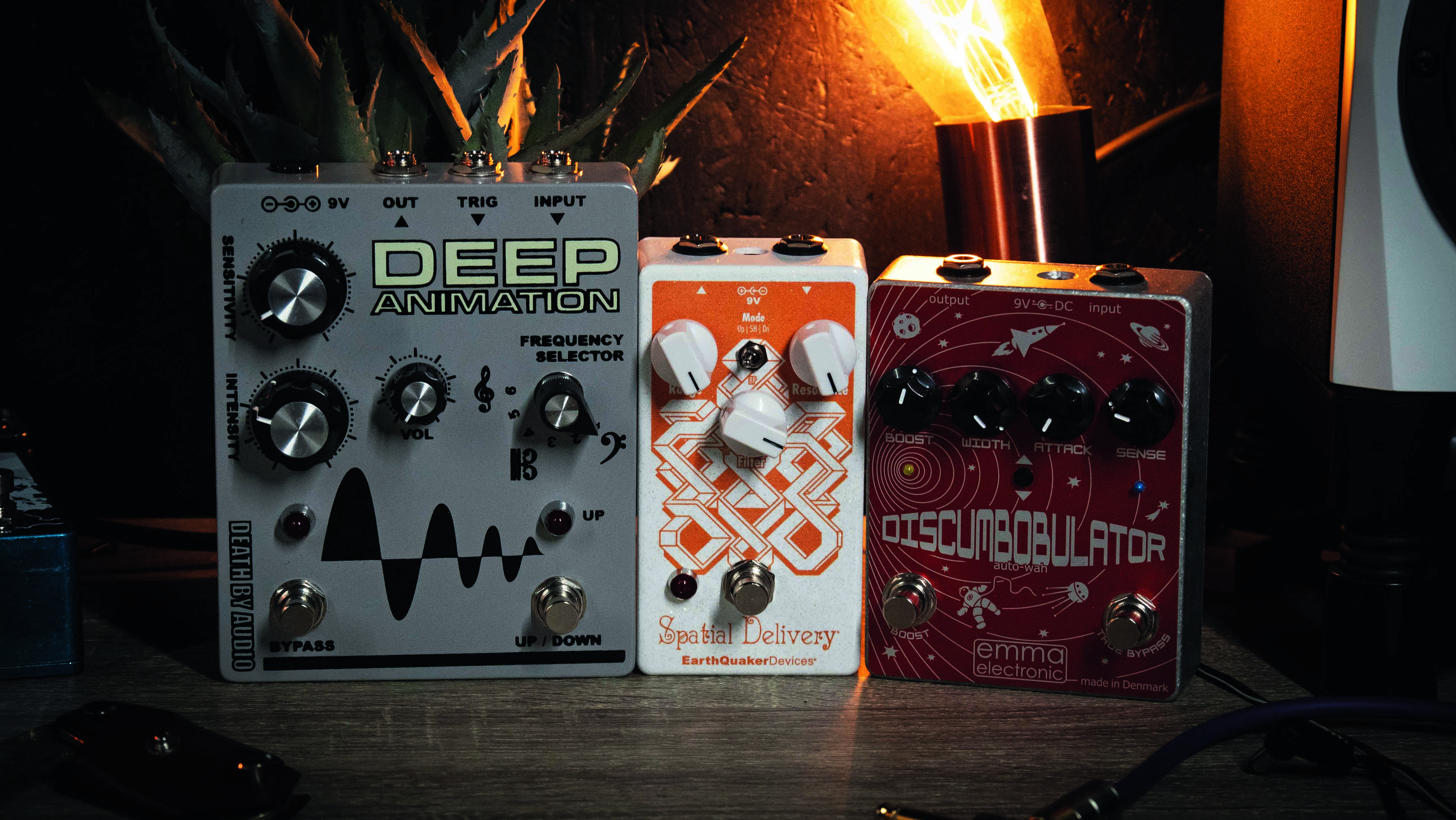How guitarists can unlock the hidden features of an envelope filter / auto-wah effects pedal
They're not just for funk, says ThePedalZone's Stefan Fast
There’s a tendency to associate certain pedal types with specific genres. TS‑style overdrive pedals often get lumped into the blues box, when they are actually instrumental for tight metal tones as well.
A compressor is almost chained to the country genre, when it often plays a big part in ambient/post‑rock to make swells and arpeggios more consistent and balanced. Chorus lived a long life in the cheesy '80s pop‑rock container, when it’s also a cornerstone in the lush, layered soundscapes of ‘dream pop’. And for me, filters and auto‑wah have been synonymous with funk and only funk for a long time.
Oh, how blind I was!
Now, don’t get me wrong. I like funk, it’s just not a genre I personally play, and hence I had never really seen a need for envelope filters before in what I do. But all of that changed when I got introduced to the EarthQuaker Devices Spatial Delivery. Besides your classic Up and Down moving envelope filters, this thing has a Sample & Hold mode, which essentially creates a voltage‑controlled step‑filter sound.
It was this new (well, new to me at the time) and very obviously synthetic take on what an envelope filter pedal could be that made me want to explore the world of auto‑wah and filter pedals more, and what they could do for me. Here are some of my findings.

Cut the quack
I think what I personally found most off‑putting about envelope filters, when used in the classic wah‑like Up mode, was their quacky nature. I quickly learned you can eliminate this, though, which opened up worlds of inspiring sounds for me. By dialling back the filter resonance (also labelled as Q or Attack on some pedals), and restricting the frequency range/depth, you get a super‑warm and touch responsive sound.
If you combine that with a fast reverse delay with a lot of feedback, you can create some really cool bubbly sequencer‑esque sounds that are great for moving textures underneath your chordal work. You can also combine it with some subtle doubling chorus, clean digital delay and a long hall reverb, and you have a delicate dynamic tone that’s great for soft synthy arpeggio lines.
Want all the hottest music and gear news, reviews, deals, features and more, direct to your inbox? Sign up here.

Fire the filters
You can also get some pretty psychedelic ambient textures by running the filter into a long tape delay and a deep shimmer reverb
The downward‑moving envelope is a much more aggressive sound and it has a really sharp and fast decay. This makes it great for more stabby old‑school bass synth sounds when combined with an octaver and a ferocious fuzz before it and some warm analogue delay after it.
Again, it’s important to keep the resonance on the filter down as this will keep the sound tighter and more precise. Restricting the filter range will also help with keeping the tone reined in. A subtler textural use is to place the filter after a digital delay.
When you play a chord, the filter will close and then slowly begin to open up. This creates the illusion of your delay trails gradually transforming from analogue to digital.
You can also get some pretty psychedelic ambient textures by running the filter into a long tape delay and a deep shimmer reverb. For this particular sound, I actually prefer the higher resonance settings and a longer filter range travel because this gives it a spiralling, bordering on self‑oscillating quality, and when combined with some blooming shimmer reverb, it will create some really special sustaining pads.

Perfect patterns
This is where modern filter pedals get really interesting to me. More and more brands are starting to include LFO waves, step patterns or ‘sample and hold’ modes in their filter pedals, effectively placing a full-on synth section on your pedalboard.
These LFO-based and voltage controlled modes work really well together with PLL (phase locked loop) harmonisers or octa-fuzz pedals for aggressive and robotic step sequencer-like tones. They are also great for gentle faux-harp-like textures when combined with chorus/flanger and some ambience.
You can find LFO, pattern and ‘sample and hold’ filters in pedals such as the aforementioned EarthQuaker Devices Spatial Delivery, plus the SolidGoldFX Funkzilla, Keeley Electronics Bubbletron and Vongon Paragraphs.

Manual movements
Some filter pedals also allow for manual control over the filter sweep via an expression pedal. How is that different to a wah pedal, you ask?
Well, wah pedals use a bandpass filter, whereas a lot of dedicated filter pedals let you switch between low-pass, bandpass and high-pass, allowing for a wider range of filter sweeps. It’s especially fun to manually sweep a high-pass filter with low resonance to create slowly disintegrating lo-fi sounds. But the mother of all filters is, of course, a bold resonant low-pass filter, which is just made for slow, epic synth-like filter swells.